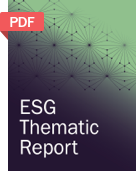Environment, Social and Governance (ESG) in Winter Wear Industry
A whole new era of changes in sustainability are driven by forces of change by the governments, corporations and consumers in terms of environmental, social and governance.
The wide range products of the winter wear industry are made out of various materials, which includes both the natural and artificial fibers. The sourcing of these materials is a challenge that negatively impacts the industry in the area of the environment of ESG. The other important factor that adversely affects the industry is the dispatching of the waste into the environment. Key leaders of the market are aware of the aforementioned negative aspects of the products, focusing on creating and executing the policies and strategies that bring positive outcomes in the area of ESG.
Increasing waste produced by the manufacturing process, such as water waste, material waste and product waste at the end-of-life, which primarily contain artificial non-biodegradable fibers impact the winter market in terms of ESG. The United Nations’ Sustainable Development Goals (UN SDGs) is a comprehensive framework that helps companies in this market obtain a perspective on the impact of their products and operations on ESG parameters.
ESG Trends
In the winter wear industry, the usage of materials such as wool, a natural fabric material and the nylon and polyester materials along with the global value chain, brings environmental challenges in the sphere of ESG. The sourcing of wool is a major challenging aspect of the ESG, since the majority of the products of the market are made out of wool sourced from animals, by many companies of the winter wear market.
The sourcing wool from the animals is one of the key challenges in the sphere of ESG of industry. It has been reported that greasy wool production on the sheep farms cause around 50%
The extraction of materials such as polyester and nylon for manufacturing, are sourced from different kinds of sources such as coal, natural gas, which strains the environment, since the extraction process leaves intense amounts of carbon footprint, contributing to the increase of global warming and climate change.
It has been reported that at least 80% of the ocean debris is made up of plastic, the improper disposal of nylon and polyester into the ocean, disintegrating itself into micro particles and taking part in the food chain process, reaching the human population through food. These aspects act as hurdles in achieving the UN SDG goals of climate action and protection of seas and oceans.
Further in terms of the social aspect of ESG, forced labor has been reported in the market. Certain religious and ethnic minorities of a country have been detained from education camps and have been forced to work in production mills of raw materials such as cotton and wool for the purpose of export. In light of the accusation, the key player, which had stated that it was an indirect beneficiary of one of the mills, had stopped sourcing the raw material from that mill.
As a consequence of aforementioned incident, key companies of the industry have made certain supplier code of conduct policies, where the raw materials are mandated to be ethically sourced and human rights of the workers shall be valued, promoting the rights of workers in the winter wear industry, thereby working towards UN SDG goals of decent work and economic growth (SDG8).
Growth of the Winter Wear Market
The winter wear market at global scale was valued at USD 268.3 billion as of 2018 and is forecasted to expand with a CAGR (compound annual growth rate) of 4.3% from 2019 to 2025. A wide range of challenges from environmental impact to forced labor have been reported in the winter wear market, impacting the key players of the market to change the policies in accordance with the United Nations Sustainable Development Goals of climate action (SDG 13) and decent work and economic growth (SDG8).
Key Companies in this theme
• Gap Inc.
• VF Corporation
• Columbia Sportswear Company
• The North Face, Inc.
• Patagonia, Inc.
Scope of the Winter Wear Industry ESG Thematic Report
• Macro-economic and ESG-variable analysis of the industry, including regulatory, policy, and innovation landscape
• Key insights on infrastructure developments and ESG issues affecting the theme
• Identify key initiatives and challenges within the industry
• Identify ESG leaders within the industry
• Understand key initiatives and the impact of companies within the sector to fuel an informed decision-making process
• Analysis of industry activities based on multi-media sources, including significant controversies and market sentiment
Key Aspects of the Winter Wear Industry ESG Thematic Report
• Offers a global perspective of the winter wear industry and the policies and measures taken by the players, for overcoming the challenges faced in terms of Environment, Social and Governance.
• Key insights into the sustainability practices of major players in the market.


